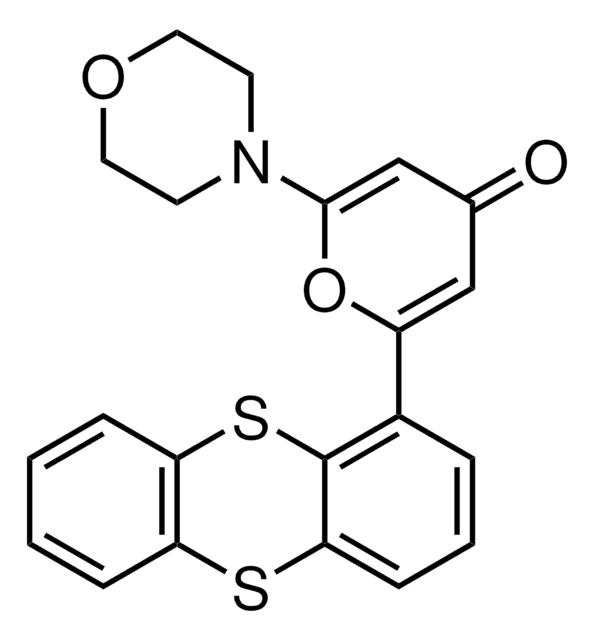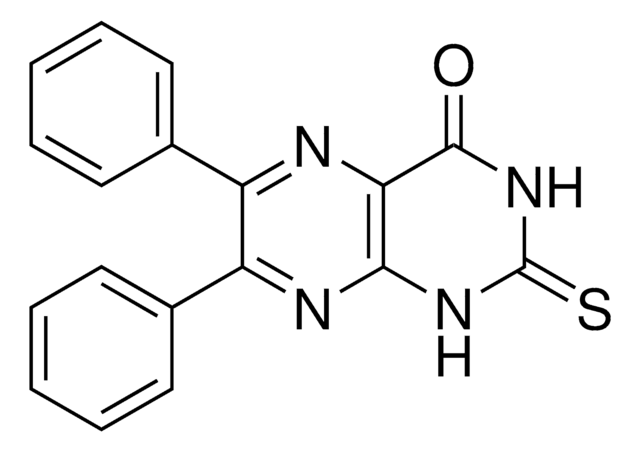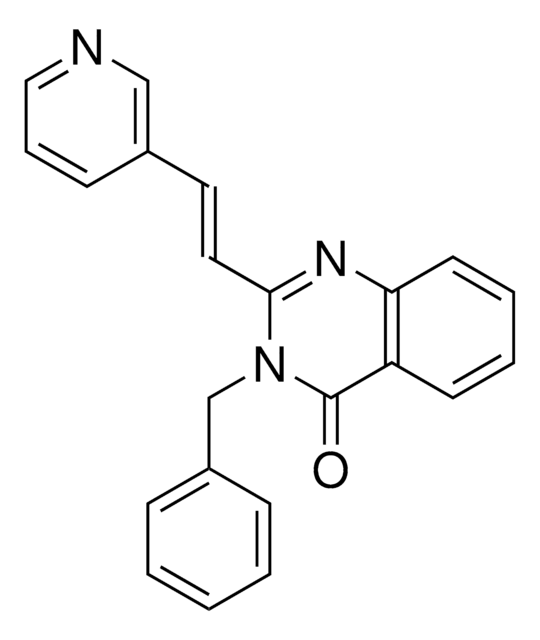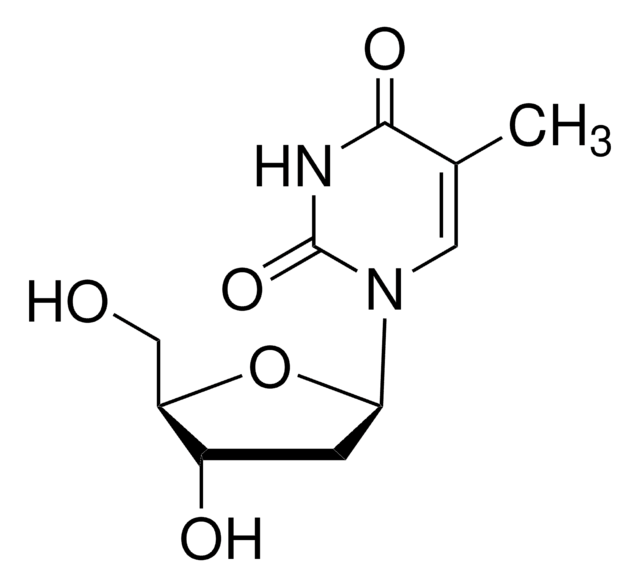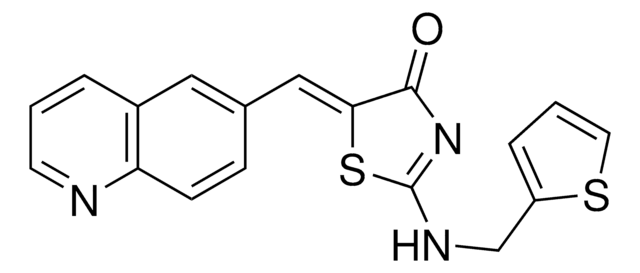553510
RAD51-Stimulatory Compound-1, RS-1
A cell-permeable sulfonamido-benzamide-based allosteric regulator that stimulates DNA binding and recombinase activities of hRAD51 by locking hRAD51 in an active conformation without affecting its active site ATP hydrolysis.
Synonym(s):
RAD51-Stimulatory Compound-1, RS-1, 3-((Benzylamino)sulfonyl)-4-bromo-N-(4-bromophenyl)-benzamide, RS-1
About This Item
Recommended Products
Quality Level
Assay
≥95% (HPLC)
form
solid
manufacturer/tradename
Calbiochem®
storage condition
OK to freeze
protect from light
color
light beige
solubility
ethanol: 10 mg/mL
DMSO: 100 mg/mL
shipped in
ambient
storage temp.
2-8°C
InChI
1S/C20H16Br2N2O3S/c21-16-7-9-17(10-8-16)24-20(25)15-6-11-18(22)19(12-15)28(26,27)23-13-14-4-2-1-3-5-14/h1-12,23H,13H2,(H,24,25)
InChI key
SWKAVEUTKGKHSR-UHFFFAOYSA-N
General description
Packaging
Warning
Reconstitution
Other Notes
Jayathilaka, K., et al. 2008. Proc. Natl. Acad. Sci. USA.105, 15848.
Legal Information
Storage Class Code
11 - Combustible Solids
WGK
WGK 3
Flash Point(F)
Not applicable
Flash Point(C)
Not applicable
Certificates of Analysis (COA)
Search for Certificates of Analysis (COA) by entering the products Lot/Batch Number. Lot and Batch Numbers can be found on a product’s label following the words ‘Lot’ or ‘Batch’.
Already Own This Product?
Find documentation for the products that you have recently purchased in the Document Library.
Our team of scientists has experience in all areas of research including Life Science, Material Science, Chemical Synthesis, Chromatography, Analytical and many others.
Contact Technical Service


